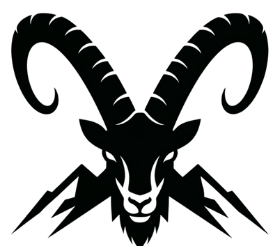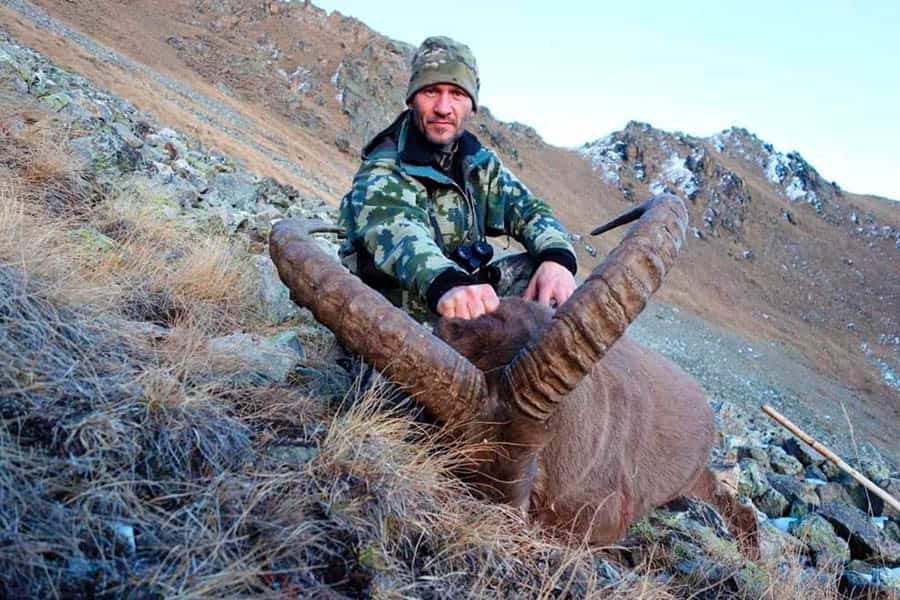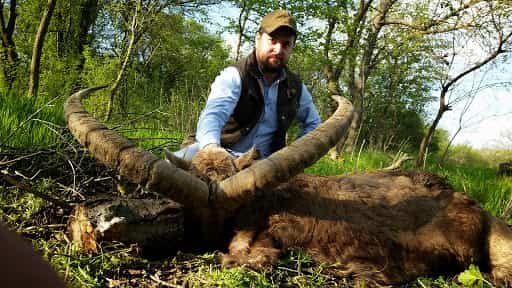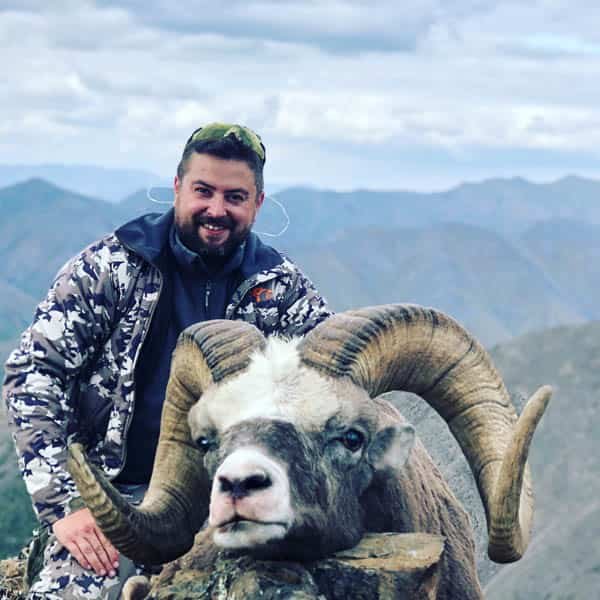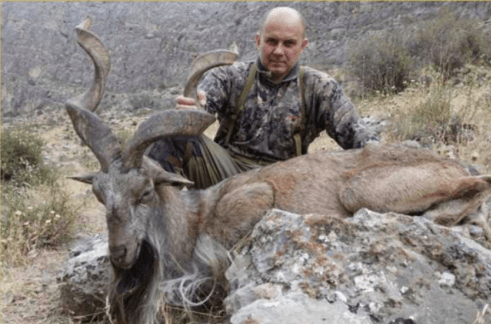Siberian mountain ibex in Tajikistan, scientific information.
Institute of zoology and parasitology AS RT
Siberian mountain ibex – Capra sibiriсa. Siberian Ibex (eng), Sibirischer Steinbock (ger), Bouquetin de Siberie (french.), Ibice Siberiano (span.), nakhchir, buzi kuhii sibiri (taj.), Teke (kirg.).
The habitat areas of Siberian Ibex includes Sayans, Altay, Tarbagatay, Tian-Shan and Pamir-Alay systems, northern-west parts of Mongolian mountains (including Gobiyskiy Altay) west parts of Kuen –Lunya, Tibet and Himalayas, also northern mountains of Afghanistan and west of Murgab.
Siberian Ibex is one of the common hunting species of ungulate mammals in Tajikistan
In Tajikistan, they live on alpines between 2,000 and 6,000 meters. Their distribution areas Badakhshan and Pamir. Siberian Ibex could be found in Turkestan ridge, Zerafshan, Darvaz, Altay, Gissar and Petr-Pervogo hills. Some of them lives on southern hills of Hazrati-shoh, Karategin, Vakhsh and Aktau ridges (map 1.)

p.p1 {margin: 0.0px 0.0px 0.0px 35.4px; text-indent: 0.0px; font: 14.0px ‘Times New Roman’; color: #000000}
Map1. Current distribution of both sibirian ibex in Tajikistan (green – Capra sibirica sakeen-Pamirian subspecies, – C.s.Alaiana – red points- Alpine)
Description. The height of Siberian mountain ibex is 140-150 cm, and between 67-100 centimeters in shoulder. Their weight between 35-90 kg, males could reach up to 120-130 kg. Females are noticeably smaller than males. It is the largest member of the genus Capra with strong and fat feet, long thin beard (less in female). Both sex have horns. Female’s horns are smaller and slightly curved back. Male’s horns are much bigger and more effective. Their front horns are relatively flat, with circular rings large transverse ridges along the front surface. The ibex’s horns are scimitar-shaped curved back up to 3-4 rings with narrow ends; their length is about 100 сm, the fixed record in Tajikistan 137cm (Pamir, 2013). Color variation in pelage can be attributed to region and season but usually it has brown color. The summer coat is short, winter-long, rough, brittle, with a comb brush along the ridge, and dense undercoat, yellowish-white, and usually there is a large light saddle spot, besides males may have white spots on their neck and back. Stripe along the back, tail and beard are blackish-brown.
Behavior
Social animal – females and their child living in herds from 10 to 20 individuals, while males live in herds much bigger. Within such herds, animals establish hierarchy through fighting and different behavior manners. Old males often stay alone or create small groups from 5 to 12 individuals. They often habitat in inaccessible places. Active mainly in daytime, they feed grass, shrubs and bushes.
Ibex are a sedentary animal that migrates only short distances for food and small seasonal migrations.
Habitat
Open and hard-to –reach mountain areas with steep slopes, numerous rocks and screes.
The main predators of Siberian ibex are snow leopards, wolves and brown bears; Young ibex can also become a victim of lynx, fox and golden eagles.
They live in alpine and steppe lawns, take rest on groceries and rocky outcrops. They characterized by extraordinary caution, great vision, delicate hearing and smell. During pasturage or rest, sentry goat climbs the rock and alerts the herds if there is any dangerous. At dangers, they hide on rocks. They could be very curious. In winters they get down from rocks, sometimes to forest zone, to valleys of Mountain Rivers or snowless slopes.
Usually stay in herds from 3-5 up to 50-80 heads. The better population state is the larger herds. There were cases in literature when the amount of goats in herds reached 300-400 individuals (winter herds union).Adult males live in groups from 10-15 individuals in hard-to-reach areas, separate from female and young. On warm summer days goats get up before dawn and feeding in the pasture and when it becomes hot they move on rocks awnings, windy ridges or snowfields until the evening.
In winters, they usually feed all day. The breeding season of Siberian ibex could be in November or December affected by location and weather conditions and last more than 20 days. Adult males 5-6 years and older create groups from 5- to 15 females and protect them from other males. The fights between adult males rarely mortality.
For the first time female, breed at 2-3 years old. Gestate period continue 170-180 days. They usually give birth to one sometimes two kids (as exception), at the end of April – May (in some region – in June).From the first day newborn could follow their mother but usually they stay in rocks or bushes for nearly one week. Females feed their kids by milk until spring however; they eat grass from monthly age. Lactation period lasts until 5-6 months. In gestate period and sometimes after someone look after female. Siberian ibex could live up to 15-18 years.
In zoo, they live 18-20 years. The age of males can be identify by the amount of transversal rings in horns. Snow leopards are the most common predator of Siberia ibex in wildlife. They oversee their prey from rocks and make a rush jump in six and more meters. In chase of prey leopard make, a few jumps but they do not follow it too long. Often leopards trap on rocks and jump on prey from top. It could said that ibex is a significant prey item for snow leopard. Zoologists say that in winter the prey for snow leopards often are old males, because of their poor post-rut condition. Scientists found that in Pamir for a single leopard there are 74 Siberian ibex. Besides predators Siberian ibex could die due to lack of food during icing and avalanche in snow-white winters.
Since long time Siberian ibex has been the object of sport and commercial hunting. From the ancient till present, local people use Siberian ibex for hunting in Tajikistan. A lot of petroglyphic drawings were found in rocks of Tajikistan.
Distribution and subspecies.
Systematic of the species is extremely complicated. The recent sources provide only three subspecies
Siberian – Carpa sibirica sibirica Meyer, characterized by small size, short thin horns, and shortened nasal bones. Their color is light. The distributed areas in Altai, Sayan and in northern part of Mongolian Republic
Alay – S.S. alaiana Noacus, larger in size, with long, thick horns and elongate nasal bones. Color is dark. The Habitat areas in Tian Shan and Pamir-Alai.
Kirghiz – S.S. formosovi Za1kin, differs from the previous males by not having a light saddle spot in winter. Habitat in the western Tian Shan: Talas Ala-Tau, Kirghiz ridge, etc. In 1947 it was brought to the Crimea, where it reproduced in Cha-tyr-Dag

Nowadays, it recognized four subspecies based on works of researchers.
- Capra sibirica sibirica – Siberian mountain ibex goat or Siberian ibex. Habitat areas: Altay and Sayans western past of Baykal
- Capra sibirica alaiana – Central Asian mountain goat or Central Asian ibex. Habitat areas: Pamir, Alay and Zaalay ranges, Tian-shan
- Capra sibirica sakeen – Habitat areas: Himalayas, Pamir, Hindu Kush and Karakorum within northern Pakistan and northern India and surrounding areas of western China
- Capra sibirica hagenbecki – Gobi mountain goat or Mongolian mountain goat. Habitat areas: Gobi, Zaalay Gobi, Eastern part of Tian-shah and neighboring regions of Northern China
Species and distinctive features/ Siberian mountain ibex
The horns of Siberian mountain ibex actively grow in second part of their life. In subsequent years, the growth slow down. The growth of old male horns (in age 9-10) slows down even more. Their growing process strongly depends on environmental factors (feed, minerals, weather condition)
The horns of male are bow-shaped, falcate or semicircle form, oval in cross section with two conspicuous ridges and clearly visible flat but knobby front surface. The front part of Siberian ibex is covered by transverse ridges, located each after 3-5 cm from base to the end of horns.
The ridges grow from calloused skin at the base of horns. On segments between yearly rings, usually grow two transverse ridges, rarely one or three. Usually the outside transverse ridges of S.Ibex (alpine ibex) and S.sibirica develop as well as the inside; they often cross with longitudinal flank ridges. The nubiana ibex’s transverse ridges develop better inner and in combination with their thin and curved back horns make them even more knobby.
They have variable shape of horns, from straight to curve back. The space between horn’s ends could be narrow or wide, directed straight or curved inward or outward. An important feature of the head quality is the ration of horn’s length to its thickness (index of horn’s weight) which is also could be a significant variable.
The old males of Siberian mountain ibex have the longest horns (up to 152 cm, sometimes even longer)
The pelage color of alpine mountain goats is monochrome and usually with dark tone while the coat coloration of Siberian ibex significantly varies across the range, attributed to geographical location, season and age variation
The pelage color of northern ibex is a quite light. The coat coloration of Tian- Shan and Pamirian ibex is chocolate-brown but there are also individuals with more light colors like ginger to light gray. The shape of patch (spot) on back and neck varies greatly, they could be clearly visible or absent at all. Patch on back are invisible in summer coat and clearly visible in winter. Males of mountain goat have a beard.
Like other Asiatic species S.Sibirica also have patches on their front legs, which is absent on alpine mountain goats. In comparison with European and African mountain goats, Siberian has callosity on their knee and carpal joint with 3 cm diameter for climbing the rocks.
Their summer coat is grayish-brown while underside is lighter. Old males usually have dark, chocolate color. Females and young ibex color is monochrome with grayish-brown or brown tone. Their winter pelage color is yellowish-grey or grayish-brown. Newborn – one, rarely two – born in May –June as exception July. Young ibex a few days after birth stay close to their mothers for protection and feeding. In case of danger, they hide between rocks; their best weapon against predator is ability to maneuver on steep, rocky terrain.
Their diet primarily consists of alpine grasses, bush, and scrub also prefer cereals and sedge. In winter they find food under the snow.
Ibex move swiftly and quickly. It move up steep rocky slopes for observing the area from predators. In hot summer day mountain goats search for watering places. In case of chase they hide between rocks, maintain close proximity to escape terrain. It could move easily throw narrow canyons, Rocky Mountains and cracks with width of 6-9 meters.
The Siberian mountain ibex is a silent animal; outside of mating period it rarely gives voice. In case of alarm emits a sharp whistle. Wounded or caught by dogs, they just silently bleat. Young make a sound that resemble the bleating of a young domestic lamb, but more deaf and squeezed. During the rut males roar very loudly; females, too but much quieter.
Population of Siberian mountain ibex
The population of mountain goats in Kyrgyzstan and Tajikistan during the Soviet Union period (1970-e) estimated nearly 70 000 individuals. The helicopter statistic survey of wild ungulate in Tajikistan on Pamir-Alay stated about 14 thousand of Siberian ibex. Because of civil war in Tajikistan (1992-1996) poaching increased, and as a result the population declined significantly. However, by the end of millennium the populations of mountain goats are significantly increased, but still their present status is unknown.
According to the recent statistic survey of wild ungulate on Pamir (2018) about 4288 were recorded in hunting areas. We also adhere to experts view of 14 000 individuals and the number is stable at the moment.
In last 30 years there is trophy hunting on Siberian ibex in Tajikistan mainly on Pamir. Trophy hunting program produce 50-100 individuals each year. Part of these trophies are inspected and processed, mainly horns and skins, as well as pictures of hunted animals. The analyze of materials suggests that in Tajikistan habitat two subspecies of Siberian ibex – Capra sibirica alaiana and Capra sibirica sakeen
Capra sibirica alaiana is found in territories of Central and northern part of Tajikistan and also occur in southern ridges and Badakhshan.
The second subspecies – Capra sibirica sakeen habitat only on Pamir (map 1). Moreover the habitat area of both species is clearly divided by geographical borders of Badakhshan and Eastern Pamir.
Morphologically, they also have significant variation in body color, shape and size of the horns.
The color description of two subspecies of Siberian mountain ibex in Tajikistan is provided below. Color variation can be attributed to gender, age and season. Young individuals up to one year usually light-gray with a slight tint of brown color, and dark-brown tail. Females are monochrome during the year; they have light-brown color sometimes with gray tint. Old females over 12 years have yellow-ocher color. Sometimes some females have a stripe of darker hair down the centre of the back like belt.
Males of Capra sibirica sakeen, distributed on Pamir, they have dark- brown and nearly black color on upper parts. Their head, neck, back and flanks with forelegs are brown, they have dark stripe running along the legs and in the area of knees, the hair color is whitish gray. The undersides – chest and abdomens are lighter then back. Their tail color vary from dark-brown to black, becoming lighter around the groin. The beard of ibex is long and brown about 10-15 cm. The old males (about 10 years) besides beard have whiskers.
Beginning from four years they have white spot(patch) on their back that become wider with the years and contrasts sharply with surrounding colors. Some have white patch on their neck from 8 years.
Males live up to 13-14 years, females up to 18 years.
Most males of this subspecies have falcate (semicircle) horns curved back with transverse ridges, with a small scope- up to 70%. About 20% have bow-shaped horns with curved back ends. Males with sprawling back and aside are less common about 10%
Females and young individuals of subspecies Capra sibirica alaiana have the same color as the previous one and have more grey tones. Males are lighter, their color is mainly gray. White spot (patch) are nearly invisible. Males and females live up to 10-12 years. They have bow-shaped horns with transverse ridges. On habitat borders of both species live hybrid forms with transitive colors.
In Tajikistan distributed two subspecies of Siberian mountain ibex , their habitat areas are clearly divided.
The subspecies of Capra sibirica sakeen habitat mainly on Pamirian highland (Pamir), that is why it could, said that it is separate subspecies of Siberian ibex, distributed on Pamir. The further genetic research could confirm this suggestion.

Trophy male of pamirian subspecies of Siberian ibex. Pic Z.Bekmurodi.
Annex
The estimate of Siberian mountain ibex horns
- The length of each horn is measured from the bottom edge of the horn’s cover on the front surface to its end. Measuring tape stretched over the ridges. The results of measuring of both horns (in cm) summarize and divide into two and get the points. (pic 56)
Pic. 56. Measuring the horn’s of Siberian ibex
- The circumference of both horns measured in the thickest place of the horn’s cover between two rings. The result use as points
- The scope of the horns determine by the widest place outside the edges.
Additional point for horn’s color; grey – up to 1 point, grayish-brown – up to 2 point, black – up to 3 point.
Addition point for knobby; weak – 1 point, normal – 2 point, strong – 3 point.
For balanced develop and symmetric horns – 3 points (table)
Table
Form of tropy sheet (EXAPLE)
| Measuring units | Measuring results | Sum cm | Half value | Index | Points |
| 1.Horn’s length | |||||
| Right | 145,0 | 290,6 | 145,3 | 1 | 145,3 |
| Left | 145,6 | ||||
| 2.Horn’s circumference | |||||
| Right | 25,4 | 25,4 | |||
| Left | 25,5 | 25,5 | |||
| 3.Horns scope | 89,7 | 0,5 | 44,85 | ||
| Addition: | |||||
| For color(0-3 points) | 2,75 | 2,75 | |||
| For knobby (0-3 points) | 3,0 | 3,0 | |||
| Total point | 249,55 |
Р.Ш.МУРАТОВ
